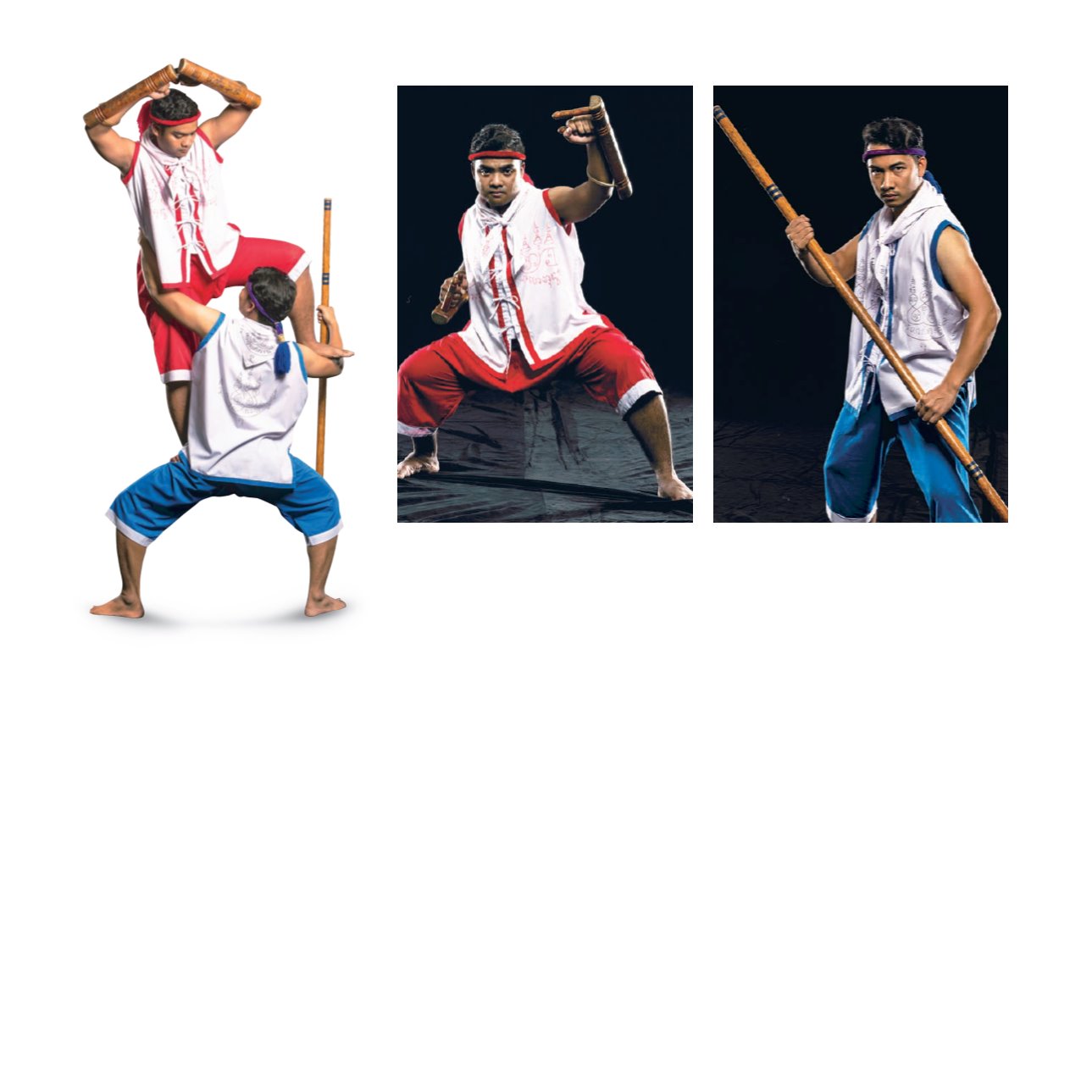

Folk Games and Sports
|
177
“
In the ancient times,
Thai nation often had
battles. Fighting in close
contact in group one by
one with scimitars, swords,
bucklers, Thai solders were
trained by practice and
became experts. Krabi-
Krabong made of wood, rattan,
cow and buffalo leather, were
used as a tool to practice
instead of real weapons
to prevent them from injury
or death.
”
Krabi-Krabong play is held in a large open space to support movement. Traditionally, before
proceeding with the sport, there must be Wai Khru (pay homage to teachers) every time. The ritual
starts with a dance demonstrating wooden weapons, mixed with a specific dance style of each
troupe or school to showcase the beauty of different choreography. The key dances of Krabi-
Krabong start with
“Khuen Phrom”
which is a dance in four directions. Next,
“Khum”
is a typical
dance to challenge each other by invading to the opponent’s side. Then, it is
“Doen Plaeng”
or
dancing and observing each other to find weaknesses. Players kneel down to perform
“Thawai
Bangkhom (offering obeisance)”
for 3 times, then change the dance weapons to the hitting ones
as a start for the real battle.
In addition to fighting in terms of skills and the use of weapons, at present, Krabi-Krabong
play is also regarded as a martial art of Thailand which brings the music from one Pi Chawa, two
Klong Khaek (double-headed drum) and one Ching (a pair of cymbals) to arouse both players and
audiences.
The costume of the Krabi-Krabong players is inspired by ancient military costumes, such as
pulled up Jung Kraben, inscribed headband, rolled metal amulets or shorts. But it is important to
wear a Mongkhon (sacred headgear) made of twisted unbleached threads as big as Manila rope,
wrapped with another layer of cloth. Both ends of the threads are left protrude.
• Preparation Stance of Krabi player
• Khuen Loi Stance (step up stance)
• Preparation Stance of the Krabong player


















